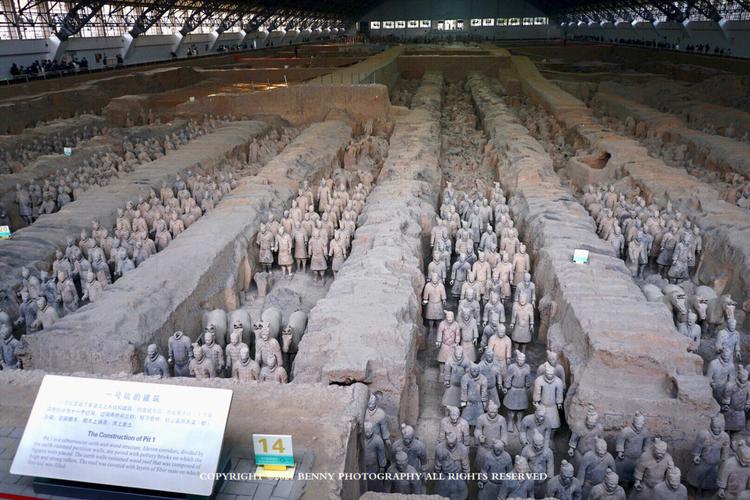
How Many Pits are in the Terracotta Army?
The Terracotta Army is one of the most iconic archaeological discoveries of all time, a vast collection of life-sized terra-cotta sculptures depicting the armies of Qin Shi Huang, the first emperor of China. Discovered in 1974 by farmers digging a well near Xi'an, the army has captivated the world and provided invaluable insight into the military practices and beliefs of ancient China.
The Four Pits
The Terracotta Army is housed within a vast mausoleum complex, a sprawling necropolis designed to mirror the emperor's earthly domain and accompany him in the afterlife. The heart of this complex is comprised of four primary pits:
-
Pit 1: The largest and most impressive, Pit 1 is arranged like a battle formation with thousands of infantrymen, archers, and charioteers standing in neat rows, facing east towards the ancient enemies of the Qin state. It is here that the most intricate and detailed figures are found.
-
Pit 2: This pit contains a mixed force of cavalry, infantry, and chariots, suggesting a more mobile and rapid reaction force. It also features kneeling archers, a unique posture designed for accuracy and stability on the battlefield.
-
Pit 3: The smallest of the three, Pit 3 is thought to represent a command post due to the presence of high-ranking officers and a chariot believed to belong to a general. It provides valuable clues to the organization and hierarchy of the Qin army.
-
Pit 4: Unlike the other three, Pit 4 is empty. Archaeologists believe this pit was left unfinished at the time of Emperor Qin Shi Huang's death, possibly due to rebellions or a lack of resources. It serves as a poignant reminder of the vast scale of the project and the abrupt end to the emperor's reign.
An Army Frozen in Time
The sheer scale of the Terracotta Army is staggering. While not all figures have been excavated, archaeologists estimate the pits may contain as many as 8,000 figures, including warriors, horses, chariots, and even non-military personnel. Each figure is meticulously crafted with unique facial features, hairstyles, and armor, reflecting the diversity and skill of the Qin artisans.
The use of terra-cotta, a type of earthenware clay, allowed for mass production while also ensuring durability. The figures were originally painted in bright colors, further enhancing their realism and grandeur. However, much of the paint has faded or chipped away over the centuries, leaving behind the muted earthen tones seen today.
Mysteries Remain
Despite decades of research, many mysteries still surround the Terracotta Army. The exact purpose of the figures remains debated, with some scholars suggesting they were intended to protect the emperor in the afterlife, while others believe they represent a symbolic army meant to demonstrate his power and authority. The unfinished state of Pit 4 also raises questions about the intended scope of the project and the circumstances surrounding its abandonment.
FAQs
1. How many Terracotta Army pits are open to the public?
Currently, three pits (Pit 1, Pit 2, and Pit 3) are open to the public.
2. Are all the warriors identical?
No, each warrior was crafted with unique facial features, hairstyles, and armor, reflecting the individuality of the Qin army.
3. Why was the Terracotta Army built?
The exact purpose remains debated, but it is believed they were created to serve and protect the emperor in the afterlife or symbolize his power and authority.